Orthodontic Relapse: Causes and Next Steps
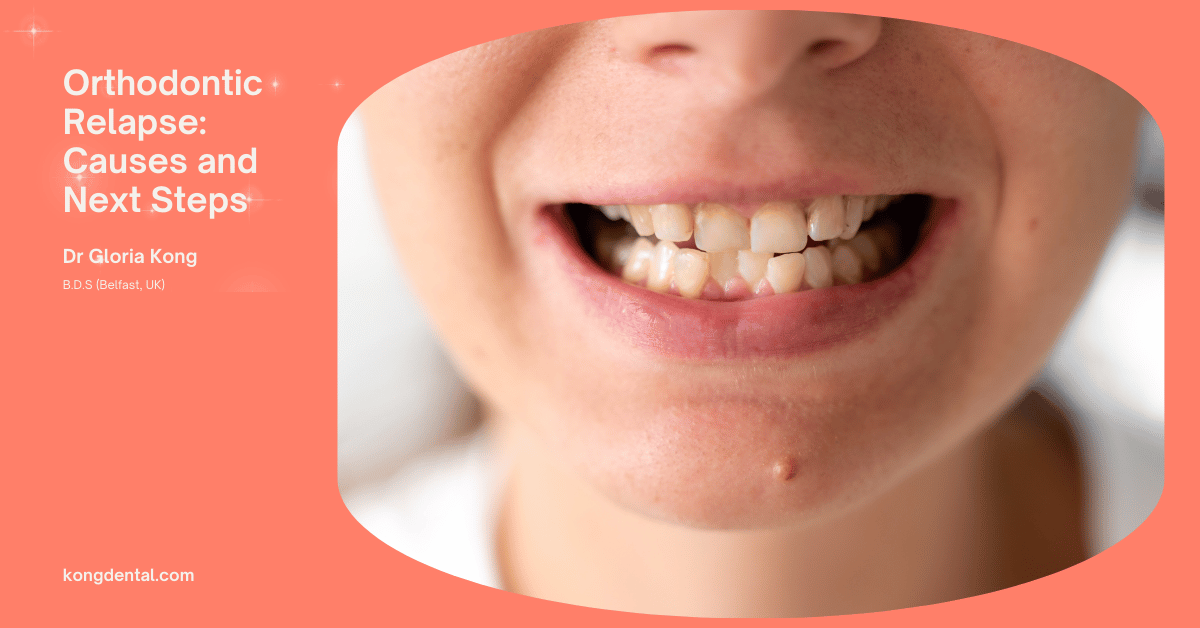
Orthodontic relapse is when your teeth return to its original position before your braces or clear aligner treatment. This happens when teeth get shifted out of their original position due to poor oral and dental habits, age, jaw growth or inconsistent retainer wear, amongst other reasons.
What Is Orthodontic Relapse?
Orthodontic relapse refers to the tendency of teeth to move back towards their original positions after orthodontic treatment has been completed.
To prevent relapse, dental professionals typically recommend using prescribed retainers consistently, having regular follow-up appointments with your dentist or orthodontist and addressing any underlying issues that may contribute to tooth movement.
What percentage of patients have an orthodontic relapse?
Studies suggest that around an average of 30-50% of patients may experience some degree of orthodontic relapse within 10 years after treatment.
This percentage can vary significantly depending on several factors such as:
Type of malocclusion: Some types of orthodontic issues are more prone to relapse than others.
Patient compliance: Those who consistently wear their retainers as instructed typically have lower relapse rates.
Age at treatment: Younger patients may have a higher risk of relapse due to continued facial growth.
Treatment approach: Different orthodontic techniques may have varying long-term stability.
Length of retention period: Longer retention periods are generally associated with lower relapse rates.
Individual biological factors: Each person’s unique oral anatomy and growth patterns can influence relapse potential.
Orthodontic relapse can range from minor tooth movements to more significant shifts back towards the original malocclusion. Many cases of relapse are minor and may not require retreatment.
To minimise the risk of relapse, dentists or orthodontists typically recommend long-term or even lifelong use of retainers, especially at night. Regular follow-ups with your preferred dentist or orthodontist can also help catch and address any early signs of relapse.
What Causes An Orthodontic Relapse?
Incomplete orthodontic treatment
This occurs when the full course of orthodontic treatment is not completed as planned. It might happen due to various reasons such as financial constraints, patient impatience, or unforeseen circumstances. When treatment is cut short, teeth may not have reached their ideal positions or the bite may not be fully corrected, increasing the likelihood of relapse.
Miscalculation of the teeth malocclusion
This refers to errors in diagnosing or planning the treatment for a patient’s specific malocclusion (misalignment of teeth). If the orthodontist underestimates the severity of the problem or doesn’t account for all factors influencing tooth position, the treatment may not fully address the underlying issues, leading to instability and potential relapse.
Lack or insufficient monitoring
Regular check-ups during and after orthodontic treatment are crucial. Insufficient monitoring can result in undetected issues like shifting teeth or changes in bite. Early detection of these problems allows for timely intervention, preventing more severe relapse.
Lack of patient compliance
Patient cooperation is vital for successful orthodontic treatment. This includes following instructions for elastic wear, proper oral hygiene, avoiding certain foods, and wearing retainers as prescribed. Non-compliance can lead to suboptimal results and increased risk of relapse.
Not going for follow up visits with the dentist or orthodontist
Follow-up appointments allow the orthodontist to assess treatment progress, make necessary adjustments, and monitor for any signs of relapse. Skipping these visits can result in undetected issues that may lead to relapse over time.
Teeth does not have time to set
After orthodontic treatment, teeth need time to stabilise in their new positions. The bone and ligaments around the teeth need to remodel and adapt. If retainers are not worn as prescribed during this critical period, teeth may shift back towards their original positions.
Bad habits
Certain habits can exert forces on teeth, potentially causing relapse. These may include:
- Tongue thrusting
- Thumb sucking
- Nail biting
- Teeth grinding (bruxism)
- Mouth breathing
Continuing these habits after orthodontic treatment can gradually push teeth out of alignment.
Not wearing post-treatment retainers
Retainers are crucial for maintaining the results of orthodontic treatment. They hold teeth in their new positions while allowing bone and soft tissues to adapt. Failing to wear retainers as prescribed is one of the most common causes of orthodontic relapse. The frequency and duration of retainer wear vary based on individual cases, but generally, consistent use is necessary, especially in the first few years after treatment.
Treatment of Orthodontic Relapse
What to Do in Case of an Orthodontic Relapse?
If you’re experiencing an orthodontic relapse, there are several steps you can take depending on the severity of the relapse:
Retainers
Retainers are often the first line of defence against orthodontic relapse. If you’ve stopped wearing your retainers and notice minor shifts in your teeth, resuming regular retainer wear may be enough to correct the issue. It’s crucial to wear your retainers as prescribed by your orthodontist, typically every night. Consistent use can often prevent further relapse and may even guide teeth back into their proper positions if the movement is slight.
New Retainers
New retainers might be necessary if your original retainers no longer fit properly or if they’ve worn out over time. Your orthodontist can create new retainers based on the current position of your teeth. These new retainers can help maintain your teeth in their current position and prevent further relapse. In some cases, a series of new retainers might be used to gradually shift your teeth back to their ideal positions, similar to how clear aligners work.
Braces
Braces or other orthodontic treatments may be required for more significant relapses. If your teeth have shifted considerably, wearing retainers alone may not be sufficient to correct the misalignment. In such cases, your orthodontist might recommend a shorter course of braces or clear aligners to realign your teeth. This treatment is often less extensive than your original orthodontic treatment, but it depends on the degree of relapse.
Clear Aligners
For moderate relapses, clear aligner systems like Invisalign and Angel Aligner might be recommended. These can effectively correct many types of tooth movements and are less noticeable than traditional braces.
Limited Orthodontics
In some cases, orthodontists or dentists might suggest limited treatment focusing only on the affected teeth. This could involve partial braces or a short series of clear aligners.
Combination approach
Sometimes, a combination of methods might be used. For example, limited braces followed by a period of intensive retainer wear.
The best course of action will depend on factors such as the extent of relapse, the original orthodontic issues, the patient’s age, and their willingness to undergo certain treatments. It’s crucial to consult with an orthodontist for a professional assessment and personalised treatment plan.
Regardless of the approach, the key is to act promptly when you notice signs of relapse. Early intervention can often prevent the need for more extensive retreatment. It’s also important to maintain regular check-ups with your orthodontist, even years after your initial treatment, to monitor for any signs of relapse and address them early.
Every case is unique, and the best course of action will depend on your individual situation. Consulting with your orthodontist is crucial to determine the most appropriate treatment for your specific case of orthodontic relapse.
Orthodontic Relapse: Frequently Asked Questions
How do I fix braces relapse?
To fix braces relapse, the first step is to consult your dentist or orthodontist.
They will assess the extent of the relapse and recommend the most appropriate course of action. For minor relapses, wearing your retainers more consistently or getting new retainers might be sufficient.
In cases of more significant relapse, you may need limited orthodontic treatment, which could involve wearing braces again for a shorter period or using clear aligners. The specific approach will depend on your individual case and the severity of the relapse.
Which orthodontic device prevents relapse of teeth?
Retainers are the primary orthodontic devices used to prevent relapse of teeth.
There are several types of retainers, including removable plastic retainers (like Essix retainers), Hawley retainers (which have a wire across the front teeth), and fixed or bonded retainers (permanent wire attached to the back of the teeth). Your dentist or orthodontist will recommend the most suitable type based on your specific case and needs.
How long does it take for my teeth to regress?
The rate at which teeth regress can vary significantly among individuals. Some people might notice minor shifts within a few weeks of not wearing their retainers, while for others, it might take months or even years for noticeable regression to occur. Factors influencing this include the original position of the teeth, the type of orthodontic treatment received, age, oral habits, and individual biological factors. Generally, the risk of relapse is highest in the first year after treatment, which is why consistent retainer wear is crucial during this period.
Do teeth relapse after taking Invisalign treatment?
Yes, teeth can relapse after Invisalign treatment, just as they can after traditional braces. The risk of relapse is not specific to the type of orthodontic treatment used, but rather it's a natural tendency of teeth to want to move back to their original positions. This is why wearing retainers as prescribed after Invisalign treatment is just as important as it is after braces.
Do I need to get braces or clear aligners treatment again if my teeth have relapsed?
Whether you need to get braces or clear aligners again depends on the extent of the relapse. For minor relapses, wearing your retainers more consistently or getting new retainers might be sufficient. However, if the relapse is more significant, you might need some form of retreatment. This could involve a full course of treatment with braces or clear aligners, or it might be a shorter, limited treatment to address specific issues. Your orthodontist will be able to assess your case and recommend the most appropriate course of action.
Can I stop wearing my retainers after 10 years?
The need for retainer wear does not necessarily end after 10 years. While the risk of relapse generally decreases over time, some degree of tooth movement can continue throughout life.
Many dentists and orthodontists recommend lifelong nighttime wear of retainers to maintain results. However, the frequency of wear might be reduced over time. It is always best to consult with your dentist or orthodontist before deciding to stop wearing your retainers, as they can provide personalised advice based on your specific case and oral health.
Will my teeth move back to the right position if I start wearing my retainers again?
If you start wearing your retainers again after a period of not using them, the effectiveness will depend on how long it has been since you stopped wearing them and how much your teeth have moved.
If it has been a relatively short time and the movement is minimal, consistent retainer wear might guide your teeth back to their post-treatment positions. However, if significant time has passed or if your teeth have moved considerably, your old retainers might not fit properly or be effective in moving your teeth back. In such cases, you would need to consult your dentist or orthodontist for new retainers or possibly additional treatment.
Make An Enquiry
Let us know your concerns and our clinic staff will get back to you in 1-2 hours.
Prefer to talk to our clinic staff directly? Call our clinic to chat with our friendly nurses at +65 6767 9502
General Information
-
Yew Tee Point
21 Choa Chu Kang North 6 #01-27 Singapore 689578
Tel: +65 6767 9502
(Please Enter The Clinic From Outside The Mall) -
Consulting Hours
Mon to Fri: 9AM to 9PM
Sat: 9AM to 6PM
Sun and PH: Closed
Related Articles
-

How Do I Find The Best Invisalign Dentist in Singapore?
If you have been looking for the best Invisalign dentist in Singapore for your teeth straightening or smile correction needs, I have written this mini...
Read More -
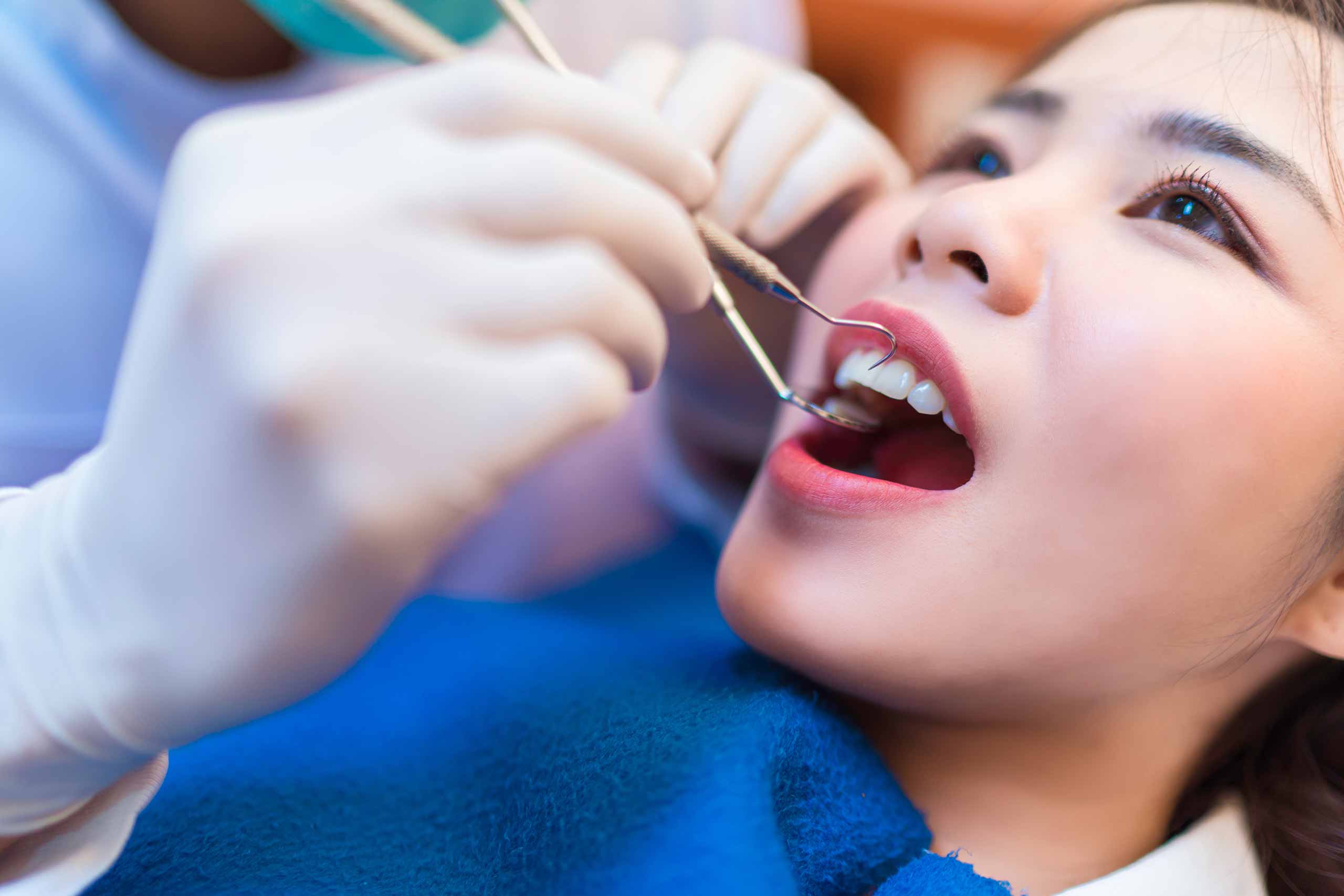
How Often Do You Need To See A Dentist?
We all know that keeping our teeth healthy and clean cannot be overlooked. Moreover, our oral health is closely related to our overall health.1 After...
Read More -
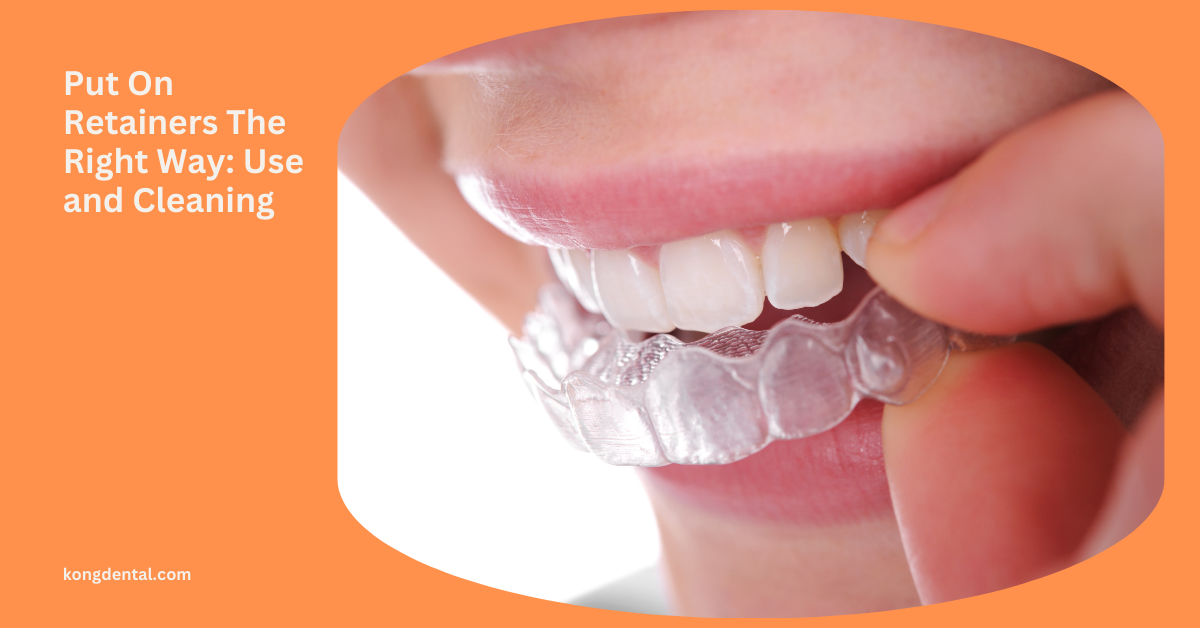
Put On Retainers The Right Way: Use and Cleaning
If you have recently completed your braces or clear aligners journey, you might have been asked to put on retainers. Retainers are a critical part...
Read More -
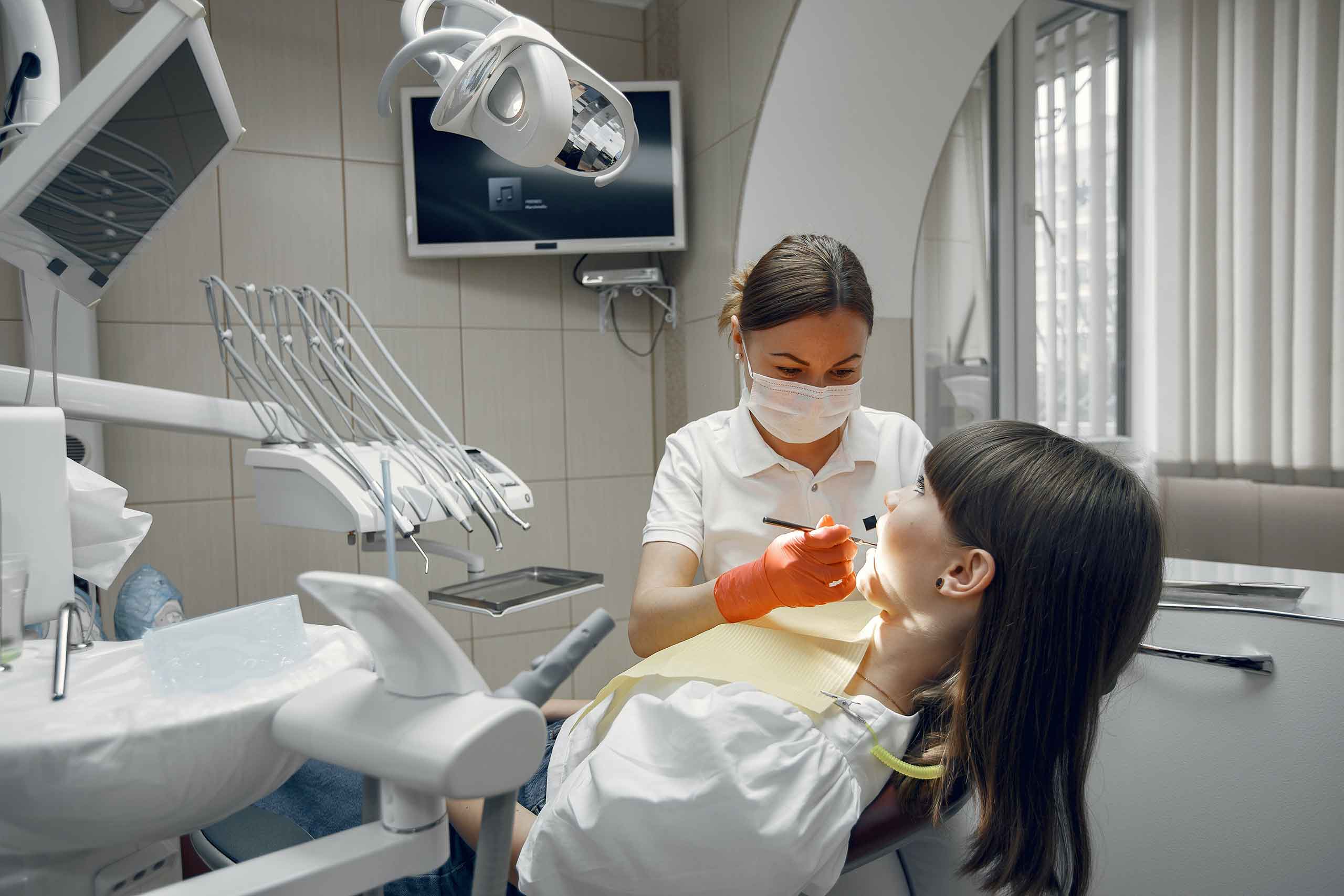
Top 5 Reasons To Visit A Dentist
Keeping up with your dental hygiene is important for your general well-being. There are many reasons why you need to visit the dentist more often....
Read More -
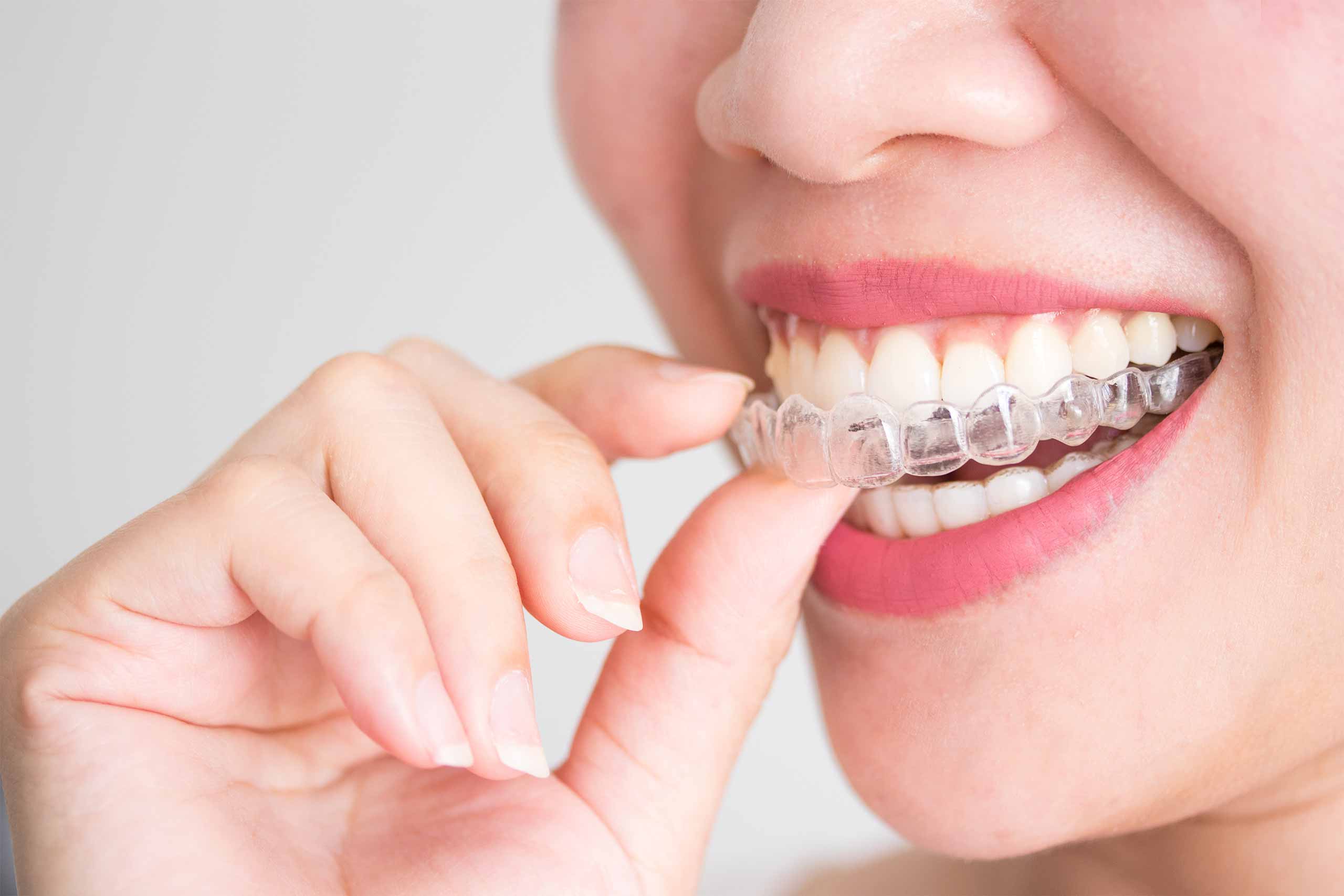
What You Need to Know About Invisalign
Are you or your child looking to straighten teeth with Invisalign? I have written a quick guide for you to help you understand Invisalign better...
Read More


